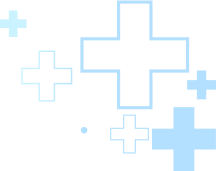

DSCB, an abbreviation for distal sodium channel blocks, signifies a groundbreaking advancement in the realm of pain management. Revolutionizing traditional approaches, DSCBs offer a novel therapeutic paradigm distinguished by their unique mechanism of action and exceptional efficacy. In contrast to conventional modalities such as regional anesthesia and local infiltration blocks, DSCBs diverge in their mode of action and therapeutic outcomes. Unlike their counterparts, which primarily target motor and sensory nerves to mitigate pain, DSCBs employ a sophisticated mechanism mediated through cannabinoid receptors. By modulating nociceptive pathways at the molecular level, DSCBs elicit profound and sustained pain relief, transcending the limitations of conventional interventions. The hallmark of DSCB therapy lies in its ability to provide remarkable pain relief across a diverse spectrum of conditions. Whether addressing acute trauma, chronic neuropathic pain, or myofascial syndromes, DSCBs demonstrate unparalleled efficacy in restoring patients' quality of life. This versatility underscores the transformative potential of DSCBs as a cornerstone of modern pain management strategies. By harnessing the intricate interplay of cannabinoid receptors and nociceptive pathways, DSCB therapy heralds a new era in pain management, offering renewed hope and respite to individuals grappling with debilitating pain.

The classification of DSCBs as α-blocks for upper limb applications and β-blocks for lower limb interventions underscores their tailored approach to pain management, reflecting a nuanced understanding of anatomical variations and therapeutic requirements. Emerging evidence highlights the significance of voltage-gated sodium channels as central targets for the development of innovative analgesic strategies. These channels serve as critical conduits for the propagation of nociceptive signals, making them prime targets for modulation in pain management. The mechanism of action of sodium channel blockers lies in their ability to intricately regulate sodium influx across cell membranes. By impeding this influx, these agents induce a cascade of physiological changes within nerve fibers, culminating in a comprehensive attenuation of pain signals. This multifaceted effect encompasses a reduction in depolarization rates, diminished cellular excitability, and decelerated conduction velocities along neural pathways. The orchestrated modulation of sodium channel activity represents a pivotal mechanism through which DSCBs exert their therapeutic effects. By selectively targeting these channels, DSCBs not only alleviate pain but also address the underlying pathophysiological processes driving nociceptive signaling. This intricate interplay between classification, mechanism of action, and therapeutic efficacy underscores the profound impact of DSCBs in reshaping the landscape of pain management, offering tailored solutions to diverse clinical scenarios.

During a DSCB injection procedure, specialized local anesthetic drugs are meticulously infiltrated around nerve sheaths at their most terminal branches. This precise administration targets the specific points where nerve fibers terminate, optimizing the therapeutic efficacy of the treatment. As the local anesthetic agents permeate the nerve sheaths, they initiate a cascade of effects that culminate in the desired outcome of pain alleviation. The primary mechanism at play involves the blockade of sodium channels within the nerve fibers. By impeding the influx of sodium ions through these channels, the initiation and propagation of nerve impulses are effectively suppressed. This sodium channel blocking effect is pivotal in attenuating pain signals transmitted by the affected nerves. By interrupting the transmission of nociceptive impulses, DSCBs disrupt the pathological cycle of pain amplification and provide much-needed relief to individuals suffering from various painful conditions. Moreover, the localized action of DSCBs extends beyond the site of injection, exerting influence on neural structures further upstream. The sodium channel blocking effect ascends towards the dorsal root ganglia and nerve roots, modulating nociceptive signaling at critical junctures along the pain pathway. As a result, DSCB therapy not only targets the immediate source of pain but also addresses underlying neural mechanisms contributing to its persistence. By mitigating excitation within the disease complex, DSCBs offer a comprehensive approach to pain management, empowering patients to regain control over their quality of life.

DSCBs, or Distal Sodium Channel Blocks, have emerged as a versatile tool in the field of pain management, showcasing their efficacy across a wide spectrum of painful conditions. These conditions encompass but are not limited to: Trauma Management: DSCBs have shown promising results in alleviating pain associated with traumatic injuries. Whether it's postoperative discomfort or acute trauma, DSCBs offer a valuable approach to pain relief. Neurogenic Issues: Conditions stemming from neurological abnormalities, such as neuropathies or nerve entrapments, can cause debilitating pain. DSCBs target the underlying mechanisms of neurogenic pain, providing significant relief and improving the quality of life for patients. Myofascial Pain: Myofascial pain syndromes, characterized by trigger points and muscular tension, often pose challenges in pain management. DSCBs offer a targeted approach to address myofascial pain, providing effective relief and promoting muscle relaxation. Neuropathic Problems: Neuropathic pain, arising from damage or dysfunction of the nervous system, can be particularly challenging to manage. DSCBs present a promising avenue for neuropathic pain relief, targeting the aberrant signaling pathways involved and offering respite to patients suffering from neuropathic conditions. By effectively targeting the intricate mechanisms underlying various painful conditions, DSCBs offer a multifaceted approach to pain management, enhancing patient outcomes and improving overall quality of life.

